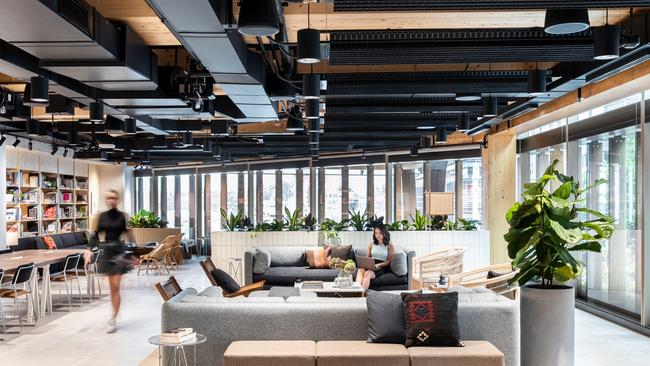WeWork crashes to $120m loss but says workers returning
The flexible space company has racked up close to $280m of losses in Australia after being hit hard by the pandemic but it says that the business is now turning around.

Flexible space company WeWork’s local operation has racked up close to $280m of losses after being hit hard by the pandemic but claims that its business is now turning around.
The company, which is saying it is on track globally as workers return to offices, copped a $120m loss in the last financial year at its local operations.
The industry appears to be split with some companies struggling to find a profitable model while others are expanding as big companies and staff demand flexible spaces.
WeWork pulled out of three venues last year in Perth, Sydney and Melbourne, and did not go ahead on expansions, but the company’s general manager Australia and Southeast Asia Balder Tol says it is back.
“As with all businesses in our space, we made significant efforts to adapt to the changing market conditions, and are seeing a return to growth,” he said. “We have seen demand from businesses of all sizes accelerate over 2021 and we are excited about the opportunities we are seeing in the market at the beginning of 2022.”
WeWork’s revenue for the first quarter for Australia increased 21 per cent quarter-over-quarter, as eastern Australia eased Covid restrictions. “Our occupancy in the first quarter 2022 for Australia also increased 13 points year-over-year, while total consolidated desk sales for the period reached pre-pandemic levels,” Mr Tol said.
During its heyday, WeWork’s global operations were valued at $47bn but its value crashed and co-founder Adam Neumann left in 2019. The company posted losses in the first quarter globally but these are narrowing as workers return in London and New York and the company cut costs.
WeWork’s financial statements showed the reliance of the local operation on its global parent. The local company had net current liabilities of $72.1m and net liabilities of $166.6m but the directors “have been assured of continued support from WeWork Companies LLC”.
However, Mr Tol said corporate Australia was also getting back to offices with flexible work a key part of this trend.
“Companies are now actioning their return to work strategies with flexible solutions, from local scale-ups like Immutable and InDebted to multinational companies like Revolut,” he said. “WeWork has grown its market share of leasing activity across Australia and is well positioned to meet the changing needs of the hybrid workforce.”
The company was hit by recognising a deferred tax asset in 2021, in line with accounting requirements, and the operating financial loss of the Australian business narrowed to $82m against $128m in 2020 when the pandemic struck.
WeWork sees Australia as a great market and insists it is still a significant market with 19 buildings in four cities.
Meanwhile, local office space company Victory Offices plunged into a trading halt on Wednesday, pending an update on its portfolio.
The halt could last until Friday as the company revealed its chief financial officer, Keith Pollocks, was following former chairman, ex-Victorian premier Steve Bracks, who exited last week.
Victory has been skirmishing with its landlords over allegations of unpaid rent and has contended with a series of building evictions by landlords.
Victory said after a “strategic review” of its office locations it would close the four loss-making Sydney CBD locations at Barangaroo Ave, 85 Castlereagh Street, 100 Mount Street, and 420 George Street.
Victory blamed the significant negative impact of Covid-19 and the increased normality of many staff working from home. While CBDs were struggling it said its performance in suburban centres had improved.
Overall, corporate Australia is seeing workers return. The Property Council of Australia’s latest Office Occupancy survey found Adelaide’s occupancy increased from 59 to 71 per cent in May, Canberra jumped from 39 per cent to 60 per cent and Perth and Brisbane both jumped 13 per cent to 63 and 64 per cent respectively.
Property Council chief executive Ken Morrison said Sydney and Melbourne’s occupancy levels also jumped, lifting 13 and 12 per cent respectively to 48 per cent for Melbourne and 55 per cent in Sydney.
“What we’ve seen this month is a consistent and sizeable lift in the numbers of people returning to the office across all CBDs,” Mr Morrison said. “More individuals and workplaces are embracing the benefits of face-to-face connection and that CBDs are regaining much of their vibrancy.”




To join the conversation, please log in. Don't have an account? Register
Join the conversation, you are commenting as Logout